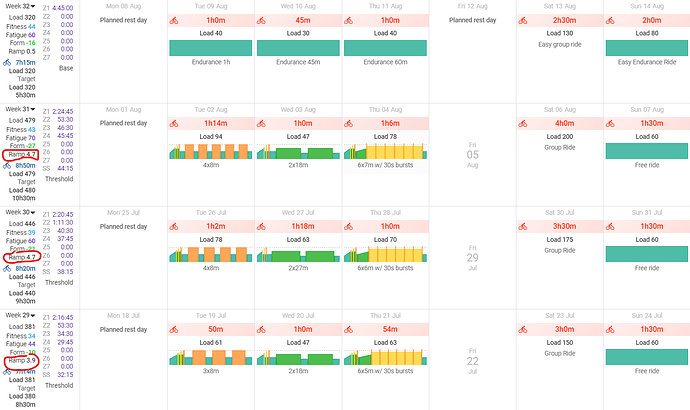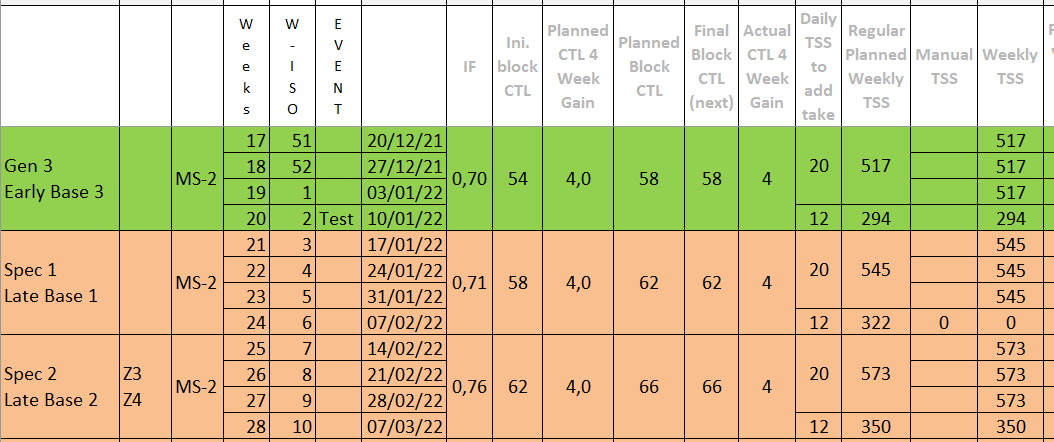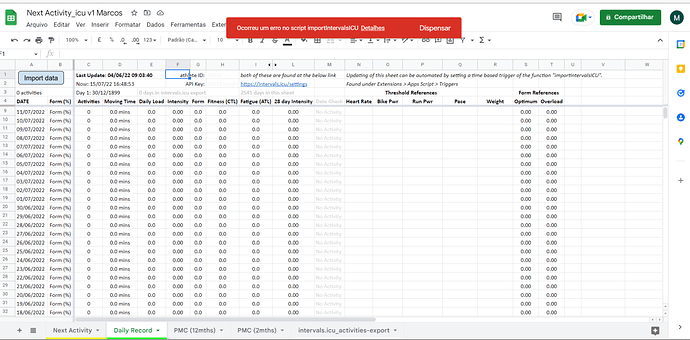This came form Alan Couzens:
"It goes like this… (assuming default constants of 42/7)
Target CTL ramp rate = ~10 per month
Target TSB floor (i.e. where your Training Stress Balance will bottom out at the end of a 3 week loading period) ~= -20 TSB
Target daily TSS load = CTL+~30 per day.
Easy as 1,2,3!
A worked example…
Athlete’s current CTL (fitness) is 100 TSS/d and we want it to be 110 TSS/d by the end of the 4 week block.
We know that a TSB of -20 is a safe ‘bottom’ for this athlete.
So we plan the loading days for the 3 loading weeks (of the 4 week block) as 100 +~30 = ~130TSS/d.
Of course at the end of the block, the athlete will have a new CTL of 110 so loading days for the next block will need to be 140TSS/d… Finnegan begin again (until Finnegan runs out of time/life space 
So, what does the recovery week/recovery days look like?
Conveniently enough, 7 days at CTL-30 at the end of the block will bring the athlete back to a ‘neutral’ freshness of TSB ~ 0 ready to start the next block (for our athlete above, a TSS load during the recovery week of 100-30 = ~70TSS/d)
With a proven athlete or an athlete with a high constitution but lower than average response, it may be more like a 2,4,6 rule, i.e. ramp rate of 20, TSB floor of -40, daily loading of CTL+60. But athletes who can handle this sort of 5TSS/wk ramp over the long term are the exception rather than the rule.
Of course, this ‘flat loading’ process is as boring to the body as it sounds to the head. There is real benefit in implementing more variability in the load to avoid ‘training monotony’ - something that can significantly diminish the response than an athlete gets from a give training load, i.e. for an average load week of 100TSS/d, having some days at 150, others at 50 and maybe even a big day at 200 & (perish the thought :-), a true rest day of zero. I’ll talk about the advantages of that type of approach in a future post. But for now…
Train smart,"
Very easy.
Take TrainerRoad TSS RAMP RATE "
TSS = Previous week’s TSS + weekly work days *rr
Typically, a weekly ramp rate in the 6 TSS neighborhood (+/- 2 TSS) works well for most riders, so a weekly ramp rate of 15 TSS is not recommended but still useful for our needs here.
De https://support.trainerroad.com/hc/en-us/articles/202237810-Training-Stress-Ramp-Rate-and-Target-Ranges "
and apply to Alan’s scheme above and you have what you want.
It is easy do checkf it this is ok but entering the result as “target load” at Interval’s and cheking the number and fitness charts.
regards,
PS: sometimes you have to make some adjustments to the frequency (2,3 sets in a row ou separate) and duration (long ones does have impact). but the main spine remains.



